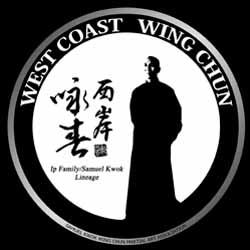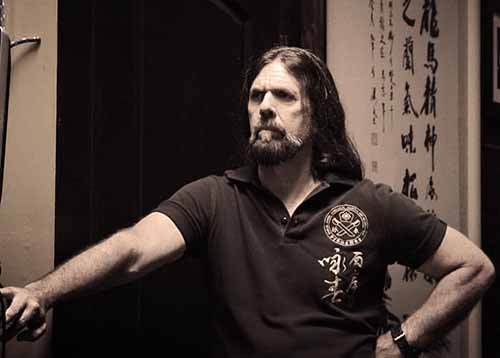Wing Chun Dummy
Wing Chun Wooden Dummy or Mook Yan Jong

Sifu Kim Squiers
Sifu Kimmy Squiers is Lead Instructor for West Coast Wing Chun Long Beach, Ca, creator of Kung Fu Awakening Program.
Wing Chun Dummy - History
Whether the Wing Chun Dummy appeared before the creation of Wing Chun Kung Fu or Wing Chun Kung Fu was created before the appearance of the wooden dummy is a problem difficult to solve and needs laborious research. However, judging from the heresay within the Chinese Kung Fu circle, we might assume the following possibilities.
It is said that there was a “Wooden Dummy Alley” in the Siu Lam monastery. If the wooden dummy alley did exist, it might have been a row of wooden dummies of different structures for intensive training. It is believed that the earliest form of the wooden dummy might have been a simple erected wooden stake that takes place of the trainee’s opponent. Later, the early founders of Wing Chun Kung Fu gradually improved the device, until it bears three arms and one leg as it looks nowadays. Also, exercises of the wooden dummy must have been simple at first, being improved later on, and finally becoming a complete systematic set of movements today known as the “Wooden Dummy Techniques”

Wing Chun Dummy - Types
Dai Jong or Ground Dummy
The Dai Jong, or Ground Dummy, is a type of Wing Chun Dummy, and is very similar to the kind used today, except it was buried in the ground. In the past, the Dai Jong, was considered the most important. The reason was that it improved footwork, power, sensitivity and understanding.
The Dai Jong measured 8 1/2 feet long and 9 inches in diameter. The bottom 3 1/2 feet was cut into a square shank, then placed in a hole lined with shredded rattan. The rattan gave its Jong its springlike quality, while the square shape of the shank kept the dummy from turning while student’s practiced. The Dai Jong was used then just a today’s modern Jong, the Hanging Dummy, is used now.
Gua Jong or Hanging Dummy
Because traditional Wing Chun Wooden Dummies were buried in the ground, Ip Man could not have one when he moved from Foshan, China to Hong Kong–there was simply nowhere to bury it. Because of this, he has a craftsman hand-make one that mounted on a stand instead–creating the first “live” WIng Chun Dummy called Gua Jong or Hanging Dummy, as opposed to the Dai Jong, sometimes called the “Dead Dummy”. Therefore, the Wooden Dummy used in Wing Chun, and sometimes in other martial arts used worldwide, is to this very day, credited to Grandmaster Yip Man.

Wing Chun Dummy Basic Specs and Description
The trunk of the Wing Chun Dummy is made of a cylindrical state of about 5 feet in length and 9 inches in diameter. Other parts of the Dummy include the two “upper arms”, which are stuck into two chiseled mortises at the same height of the upper part of the trunk; the third arm, called the “middle arm” which is stuck into a chiseled mortise below that for the middle arm; and the “dummy leg” which is a short bent stake thicker than the three arms, stuck at a chiseled mortise below that for the middle arm.
The above parts together form the body of the dummy, which is fixed to a supporting frame by two cross-bars, respectively passing through mortised holes at the upper and lower ends of the trunk. the two cross bars are fixed onto two perpendicular square pillars. The supporting pillars are usually firmly fixed onto the wall or at the ground, so as to withstand heavy strikes.




